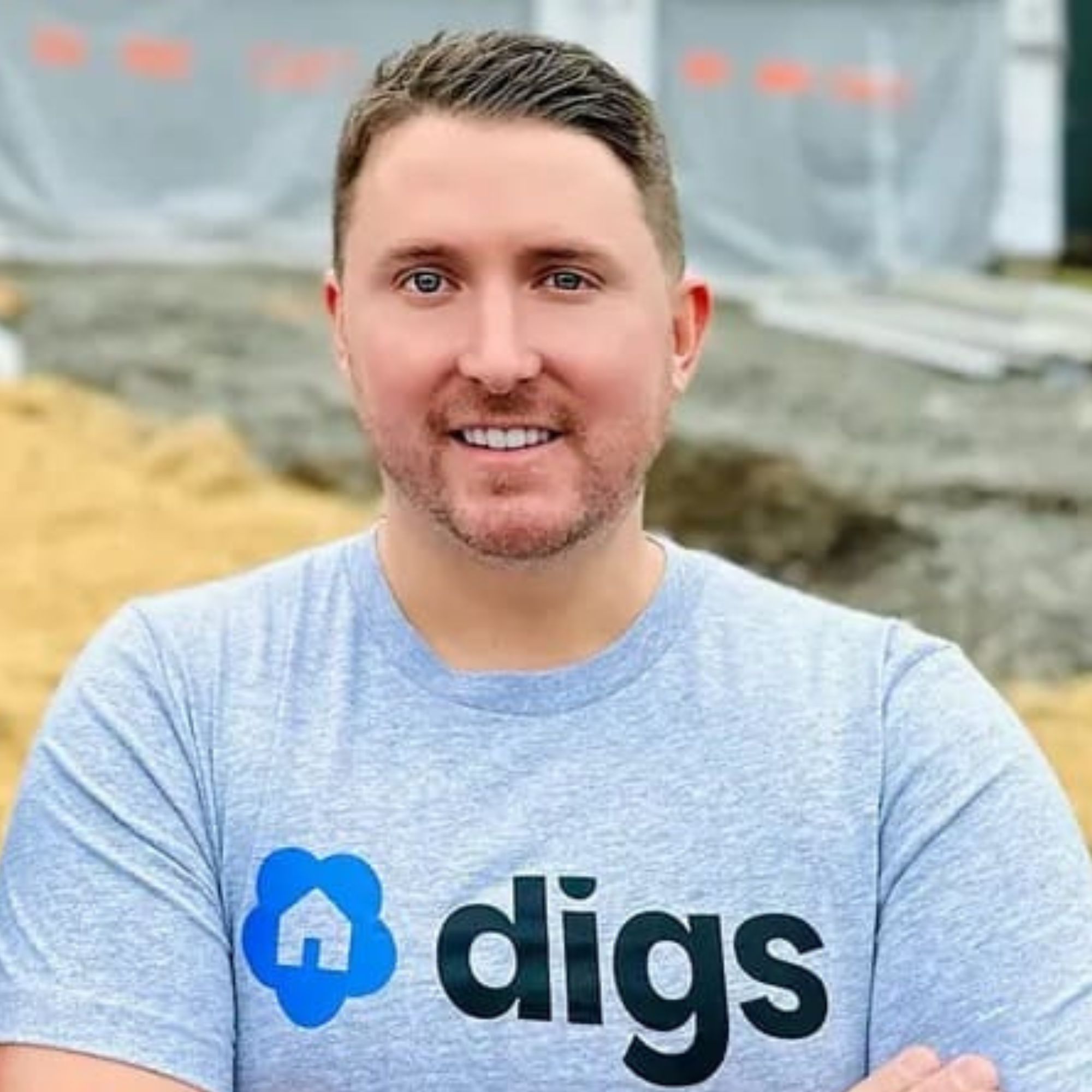Ready to build your own Founder-Led Growth engine? Book a Strategy Call
Frontlines.io | Where B2B Founders Talk GTM.
Strategic Communications Advisory For Visionary Founders
Actionable
Takeaways
Turn industry warnings into competitive advantages:
When mentors warned Anwar that subcontractors were hard to reach and general contractors were poor software buyers, he reframed this as validation. "Instead of taking it as a negative and kind of changing the idea, I took it as kind of validation that this is great. Just because nobody else was really going to try to go after the space." B2B founders should consider whether widespread industry skepticism might actually signal an underserved opportunity with less competition.
Build an indirect go-to-market strategy when direct sales won't scale:
Rather than pursuing expensive direct sales to thousands of small subcontractors, Constrafor sold to large general contractors at low margins to access their 300-400 subcontractors at once. This created a distribution channel that would have been impossible to build through traditional sales methods. B2B founders should identify intermediaries or platforms that can provide access to their true target customers at scale.
Recognize product-market fit through pattern recognition:
Anwar knew they had achieved product-market fit when they reached customer number 10-12 requesting exactly the same thing. "We didn't have to kind of study this whole thing from scratch as if we were dealing with it for the first time." B2B founders should look for the moment when customer requests become predictable and solutions become repeatable rather than focusing solely on revenue metrics.
Prioritize sales team development over marketing in B2B:
Constrafor crossed $1 million in annual revenue before building a marketing team, instead focusing on sales team structure and product-led lead generation. "We've tried to build out the product to generate the leads as opposed to having to rely on marketing for warming up the leads." B2B founders should consider whether their resources are better invested in sales infrastructure and product virality before traditional marketing efforts.
Leverage unique data assets for thought leadership:
With 25% market penetration, Constrafor began providing industry insights on insurance pricing, material costs, and project pipelines. This data-driven approach to content creation established them as a trusted voice in construction. B2B founders should identify unique data they collect through their platform and use these insights to build authority rather than creating generic educational content.
Conversation
Highlights
How One Founder Turned Industry Skepticism Into a $400M Construction Tech Victory
Most entrepreneurs would have walked away when every mentor warned them against their idea. But Anwar Ghauche saw those warnings differently. In a recent episode of Category Visionaries, the CEO and founder of Constrafor shared how he transformed industry skepticism into a competitive moat, building a construction procurement platform that has raised over $400 million in funding and now serves 75,000 companies representing 25% of all US construction firms.
The Contrarian Bet That Started Everything
Before founding Constrafor, Anwar worked as an investor at a hedge fund, running a large book focused on technology companies. This experience taught him valuable lessons about planning and market analysis, but nothing could have prepared him for the chorus of warnings he’d receive when pitching his construction tech idea.
“Everybody had warned me that subcontractors are very tough to reach and general contractors are not good buyers of software,” Anwar recalls. These warnings came from well-respected mentors in the venture capital space, people whose opinions carried significant weight in the startup ecosystem.
But instead of deterring him, these warnings validated his thesis. “Instead of taking it as a negative and kind of changing the idea, I took it as kind of validation that this is great. Just because nobody else was really going to try to go after the space,” Anwar explains. “This left it quite open for the taking because I knew about the issues that subcontractors were facing.”
His insight into the construction industry came from personal experience. Growing up with parents in construction, Anwar understood the fundamental problem plaguing subcontractors: “They’re being technically asked to finance the entire project on their own balance sheet.” This cash flow challenge created a massive opportunity for the right solution.
The Indirect Distribution Strategy That Changed Everything
Rather than following the conventional path of selling directly to subcontractors one by one, Anwar developed an unconventional go-to-market strategy. He would sell software to large general contractors at low margins, using them as a distribution channel to access their hundreds of subcontractors.
“Instead of just kind of following the typical label where you just go after these SMBs one by one, I had made the decision that it’s worth it for us to go and build software for the very large general contractors to underprice there if needed, just so that we can get all of their subcontractors,” Anwar explains.
This strategy proved brilliant for several reasons. First, it gave Constrafor immediate access to scale – “by selling this piece of software to the large general contractor, we got access to 300, 400 subcontractors on the platform.” Second, it solved the distribution problem that had historically made construction tech difficult. Third, it positioned Constrafor to monetize the subcontractor side properly once they had built sufficient concentration.
The timing of their first major contract closure couldn’t have been more dramatic. “I think we closed our first general contractor customer the day before New York shut down,” Anwar recalls about the March 2020 COVID lockdowns. “If that contract had not closed, I don’t know how the trajectory of the company would have been.”
Grassroots Customer Acquisition in a Digital World
With their first general contractor secured, Anwar and Tony, who would become his Chief Revenue Officer, began the challenging work of converting subcontractors. Their approach was refreshingly analog in an increasingly digital world.
“At the beginning, Tony and I would just try to call every single subcontractor on the platform,” Anwar explains. But they didn’t stop at phone calls. “We take boxes of bagels and sandwiches and just really go and try to meet people in their office and they were quite surprised that a compliance platform is trying to reach out.”
These in-person visits created genuine connections in an industry where personal relationships matter immensely. “It’s only once they understood that we had more to offer to them that they kind of appreciated the value there,” Anwar notes. They also leveraged their early customers for introductions, building trust through existing relationships rather than cold outreach.
Recognizing Product-Market Fit Through Pattern Recognition
While many founders focus on revenue metrics to validate their business model, Anwar used a different approach. He looked for pattern recognition in customer requests rather than just financial indicators.
“I think I would call that when we got kind of the 10th customer that was asking for exactly the same thing,” Anwar explains when describing their product-market fit moment. “It’s really when we got kind of a dozen subcontractors that are looking for exactly the same thing, where we didn’t have to kind of study this whole thing from scratch as if we were dealing with it for the first time.”
This approach proved more reliable than traditional metrics. “I think once we got to customer number 10, number 12… that’s when it felt like it clicked… I felt comfortable enough to say that this business model was valid, that the product market fit was there, and that’s really when we started scaling aggressively.”
Building Product-Led Growth Before Marketing
Unlike many B2B companies that invest heavily in marketing early, Constrafor took a different path. They focused on building sales infrastructure and product-led lead generation before hiring their first marketing team member.
“I think we had crossed a million dollars of annual revenues before we really had the marketing team,” Anwar reveals. Their philosophy was to “build out the product to generate the leads as opposed to having to rely on marketing for warming up the leads and kind of serving them to the sales team.”
This approach allowed them to “shortcut my way out of building a marketing team” until they reached sufficient scale to justify the investment. Only after proving their sales model worked did they begin building out traditional marketing functions.
As they scaled, they systematically divided their originally end-to-end sales team into specialized functions. “We ended up kind of dividing the team into an SDR team and account executive team, an account management team and even a servicing team,” Anwar explains. This specialization helped “scale everyone’s output” as the company grew.
Data as a Competitive Moat
With 25% market penetration among US construction companies, Constrafor began recognizing the value of their unique data position. “We have a good amount of data about what’s happening in the industry at any time, whether it’s on insurance pricing, whether it’s on material pricing, whether it’s on margins, whether it’s on pipelines of projects coming online,” Anwar notes.
This data became the foundation for their thought leadership strategy. Rather than creating generic content, they focused on “relying on the data that we had on the platform to really identify some key insights.” This approach established them as a trusted voice in the industry, with executives seeking their opinions on market trends and conditions.
The Vision for Invisible Software
Looking ahead, Anwar’s vision for Constrafor centers on a counterintuitive principle: making software disappear entirely. “Instead of trying to make it the best looking software, it should really be the invisible software for them,” he explains.
This philosophy reflects a deep understanding of their users. “Subcontractors don’t love to spend a lot of time managing their back office,” Anwar observes. Rather than building increasingly sophisticated interfaces, Constrafor is focused on “eliminating that interface” through automation and AI agents that handle back-office functions seamlessly.
Lessons in Contrarian Thinking
Today, Constrafor has processed nearly $2 billion in invoice funding and achieved a remarkable milestone: “Last month every single individual, whether that’s an SDR, an account executive, an account manager, they all reached their quotas.” This comprehensive quota achievement signaled to Anwar that “it’s time to start aggressively hiring again.”
The company’s success validates Anwar’s contrarian approach from the beginning. By seeing warnings as validation, building indirect distribution channels, focusing on pattern recognition over vanity metrics, and prioritizing product-led growth over traditional marketing, Constrafor carved out a dominant position in a market most considered impossible to penetrate.
For B2B founders facing similar skepticism about their chosen markets, Anwar’s journey offers a powerful lesson: sometimes the markets everyone warns you away from are exactly where the biggest opportunities hide. The key is having genuine insight into the problem, coupled with the contrarian thinking necessary to build solutions others won’t attempt.











































